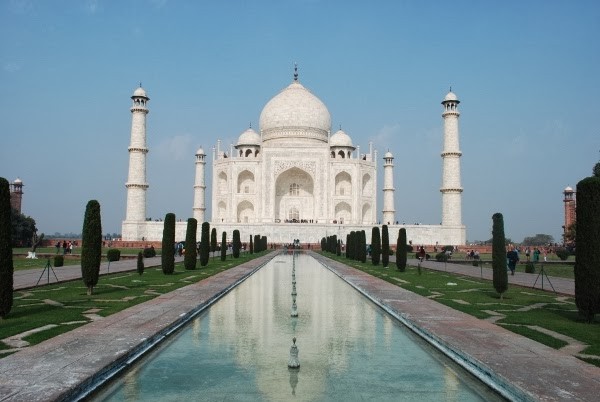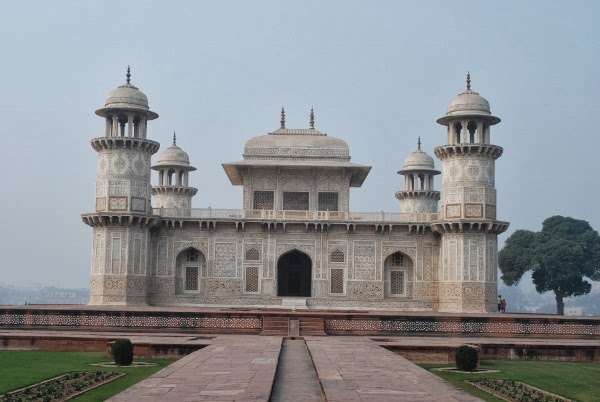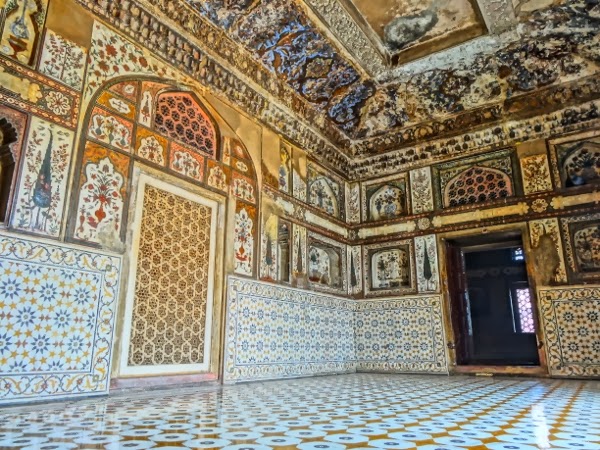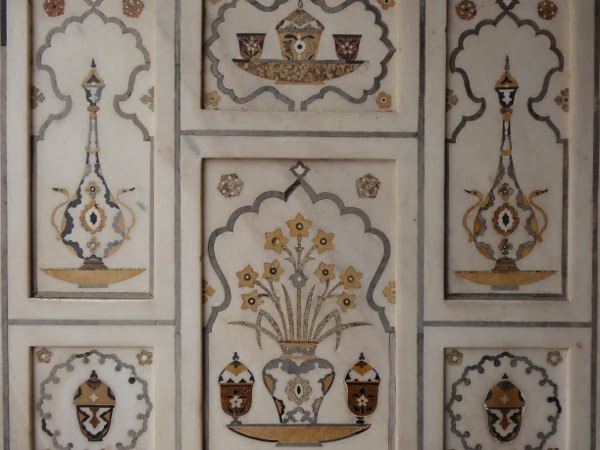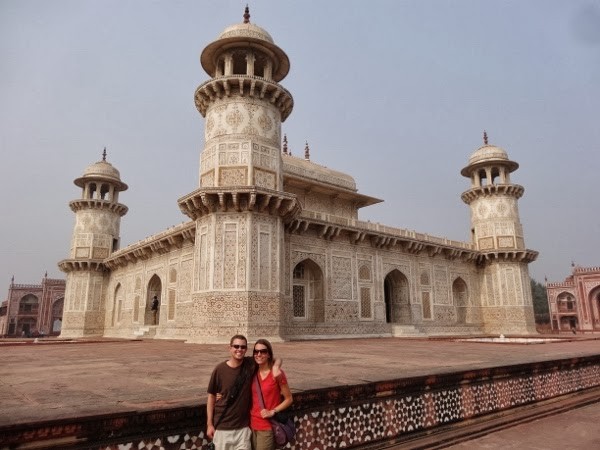Published by Jeremy. Last Updated on July 9, 2022.
Disclaimers: Our site uses demographic data, email opt-ins, display advertising, and affiliate links. Please check out our Terms and Conditions for more information. Listed prices and attraction details may have changed since our visit and initial publication.
Before arriving to Agra, we didn’t know much about the city other than the famous monument, The Taj Mahal.
In fact, we had only planned one night to see the Taj Mahal in Agra a because of reading so many stories about how little there is to see other than this star attraction.
But while the Taj Mahal is the most visited attraction in Agra, and likely all of India, there are others that we appreciated far more during our stay in the city.
One of those was the tomb of Itimad-ud-Daulah, what we consider to be the inspiration for the famous monument everyone comes to Agra to see.
History of The Tomb of Itimad ud Daulah – The Baby Taj
My guess is that for many readers this is the first time you’ve ever heard of this tomb, also referred to locally as The Baby Taj.
The tomb is the precursor to the Taj Mahal as it was built by Nur Jahan for her father, Mirza Ghiyas Beg (also called “the pillar of the state” or Itimad-ud-Daulah) in the years 1622-1628, 5 years before construction of the Taj Mahal began.
In Agra, all history seems to come back to the Taj Mahal, as the woman who the famous mausoleum was built for (Mumtaz Mahal) was also Mirza’s granddaughter.
Between these two historic monuments, and the famous Agra fort where the rulers and their families lived nearby, the city’s history that is on display the most comes down to the events that occurred during this one family’s reign in the 1600s.
Why The Tomb of Itmad-ud-Daulah Is Worth It
Although small in size when compared to the Taj Mahal, a visit to the baby Taj is like taking a brief step back in time in Agra’s history, one best done after a visit to the iconic structure.
If visiting the Baby Taj at the end of your stay in Agra, it is easy to see where the designs of the Taj Mahal came from. The use of white marble and intricate inlays are similarly found in this mausoleum, but taken to the next level on the facade of the Taj Mahal.
We like to think that there was possibly some bitterness in the family, and the husband of Mumtaz wanted to build something so grand that it overshadowed the otherwise stunning and iconic Baby Taj of its day (thus pushing her grandfather to the back pages of the history books).
Of course, there is no proof to this idea, but why else build something on a scale so much larger than another temple in the region other than as a way to one-up a rival or settle some old family feud?
But where the Taj Mahal gets its majesty from the exterior views that we all know too well, what remains today lacks a lot on the inside. In keeping with Islamic principles, the inside of the actual burial chamber at the Taj Mahal was kept rather basic and devoid of ornate decorations.
Although the cenotaph, or fake tombs above the ground, are only somewhat decorated and on display for visitors to pay respects, they pale in comparison to the decorations found inside the Baby Taj just a few kilometers away.
Here you can see (and photograph!) the ornate decorations in all their majesty. Inlays at every turn, geometric patterns as far as you can see, and colorful paintings line the walls of each passing corridor and chamber.
Even better, the Baby Taj hardly gets any visitors compared to its larger counterpart just a few miles away, and you can almost have the entire tomb to yourself during a visit.
For us, we couldn’t ask for more.
Visitor Information: Visitors should be aware that the Taj Mahal is closed on Fridays while the Baby Taj is open all week (as of December 2013). Security is very tight at these attractions and large bags, food, drinks other than water, video cameras, and other electronics other than a camera and phone are not allowed.
We recommend checking out the full rules before visiting as the guards can be incredibly strict, especially at the Taj Mahal (but the Baby Taj is far more relaxed, luckily).
In addition to these sights, do not miss exploring the massive complex of Agra Fort, located just next to the train station. Although we had to cut out a few forts in Rajasthan due to train ticket issues, Agra Fort was our favorite out of all the forts we visited in India.
About Jeremy
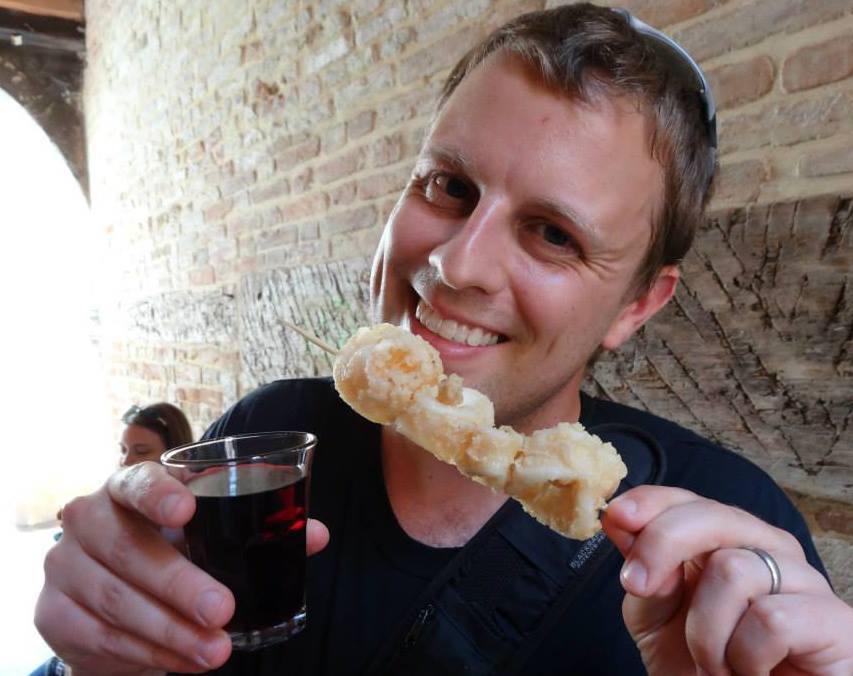
About the Author: Jeremy is a full-time travel writer based in Pittsburgh and primary author of this site. He has been to 70+ countries on five continents and seeks out new food, adventure activities, and off-the-beaten-path experiences wherever he travels.
